Greenaffair
We are one-stop solution for Organic farming.
SOIL NOURISHING RECIPES

ऑर्गेनिक और नेचुरल फार्मिंग की ओर कदम बढ़ाएं!🌱 बिना केमिकल्स के स्वस्थ फसल कैसे उगाएं#OrganicFarming
Click Hear for more Information –
https://youtu.be/WovhlWKJGrg?si=orRfxrT8-Ob1ayur
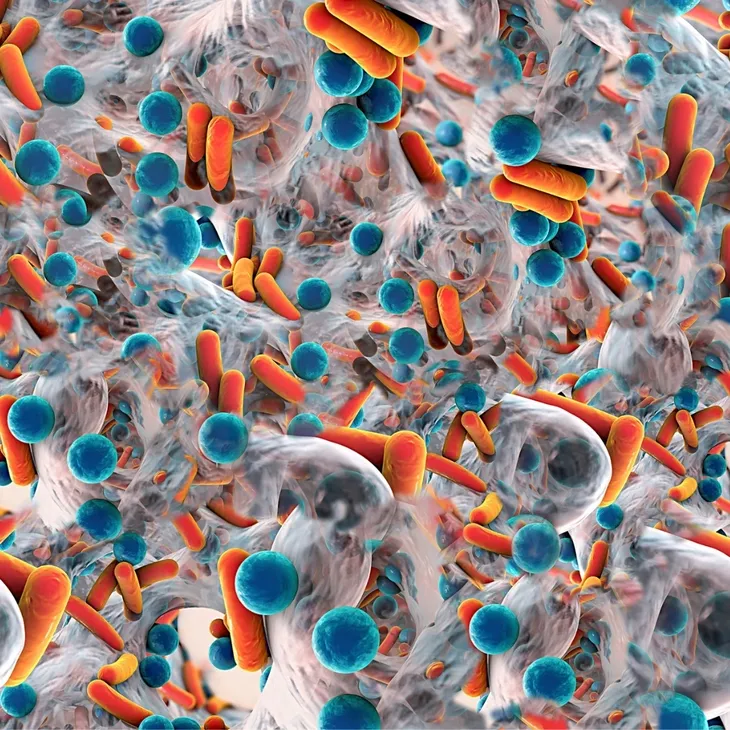
"BENEFICIAL SOIL BACTERIA: A COMPREHENSIVE LIST"
List of beneficial bacteria for soil
Rhizobium: Nitrogen-fixing bacteria that form symbiotic relationships with leguminous plants.
Azotobacter: Free-living nitrogen-fixing bacteria that make atmospheric nitrogen available to plants.
Bacillus subtilis: Helps suppress harmful pathogens in the soil and promotes plant growth.
Pseudomonas fluorescens: Suppresses soil-borne pathogens and produces antibiotics and siderophores.
Lactobacillus: Breaks down organic matter and improves soil structure.
Streptomyces: Produces antibiotics and enzymes to control soil-borne diseases and decompose organic matter.
Nitrosomonas and Nitrobacter: Involved in nitrification, converting ammonia to nitrite and nitrate for plant absorption.
Clostridium: Some species fix atmospheric nitrogen and aid in organic matter decomposition.

"MAXIMIZING SOIL HEALTH WITH BIOCHAR: A COMPREHENSIVE GUIDE"
Biochar
Biochar is a type of charcoal produced from organic materials through a process called pyrolysis. It is known for its ability to improve soil quality and sequester carbon in a stable form. Here’s a basic method for making biochar:
Materials and Tools:
- Organic Biomass: You can use various types of organic materials, such as wood chips, crop residues, leaves, or agricultural waste. Make sure they are dry and free from contaminants.
- Airtight Container: A metal or ceramic container with a lid that can be sealed tightly. Common options include steel drums or old metal barrels. The container should have an airtight seal to control the oxygen supply during pyrolysis.
- Ignition Source: You’ll need a way to ignite the organic material. You can use a propane torch, kindling, or another heat source.
- Metal Rod or Pipe: This will serve as a vent to allow gases to escape during the process.
- Steps:
- Prepare the Container:
- Clean and inspect the container to ensure there are no leaks or holes. It should be completely sealed except for the vent.
- Load the Container:
- Fill the container with the organic biomass material. You can break it into smaller pieces if necessary. Leave some space at the top to allow for expansion during pyrolysis.
- Seal the Container:
- Seal the container tightly with the lid to create an airtight environment.
- Create a Vent:
- Insert a metal rod or pipe through a small hole drilled in the lid. This will serve as a vent to allow gases to escape while preventing oxygen from entering.
- Ignite the Biomass:
- Light the organic material through the vent using your chosen ignition source. Ensure that the biomass catches fire.
- Control the Airflow:
- Adjust the vent to control the airflow into the container. You want to limit the oxygen supply to promote pyrolysis (decomposition of the material in the absence of oxygen), which will create biochar.
- Monitor the Process:
- Keep an eye on the process to prevent excessive combustion. You should see smoke and gases escaping from the vent. The flames should be minimal or nonexistent inside the container.
- Maintain Pyrolysis:
- Maintain the pyrolysis process for several hours to ensure that the organic material is thoroughly converted into biochar. The time required can vary depending on the type of biomass and the size of the container.
- Cool and Retrieve the Biochar:
- Allow the container to cool down completely before opening it. The biochar should be a black, porous, and brittle substance. Carefully remove it from the container.
- Crush and Store:
- If desired, crush the biochar into smaller pieces to increase its surface area. Store it in a dry, airtight container to prevent moisture absorption.
Biochar can be used as a soil amendment to improve soil fertility, water retention, and carbon sequestration. When using biochar in your garden or soil, it’s important to mix it thoroughly and allow it to charge with nutrients before application.

BIOENZYMES
Citrus Peel Bioenzyme: Make Your Own Eco-Friendly Cleaner
Citrus peel bioenzymes are a natural and eco-friendly way to create a powerful cleaning solution and household cleaner. They’re made from leftover citrus peels, which are rich in natural enzymes and can help break down grease and stains. Here’s a simple recipe to prepare citrus peel bioenzymes:
Ingredients:
Citrus Peels: You can use peels from oranges, lemons, limes, or any citrus fruit. Aim for about 1-2 cups of citrus peels.
Jaggery: 1 tablespoon
Water: 1 liter (approximately 4 cups)
A Plastic or Glass Container: A wide-mouthed container with a tight-fitting lid works best. Avoid metal containers as they may react with the citrus acids.
Instructions:
Collect Citrus Peels: Start by collecting the peels from your citrus fruits. Make sure to remove any fruit pulp and seeds. The peels should be clean and free from any residual fruit.
Prepare the Container: Clean and dry your plastic or glass container. Ensure that it’s completely dry, as moisture can promote the growth of unwanted microorganisms.
Layer the Citrus Peels: Place the citrus peels in the container. You can cut them into smaller pieces to fit if necessary. Fill the container about one-third full with the peels.
Add Jaggery: Sprinkle the jaggery over the citrus peels. Jaggery acts as a natural preservative and helps kickstart the fermentation process.
Pour Water: Pour the water into the container, covering the citrus peels and Jaggery completely. Leave some space at the top to allow for the mixture to bubble and expand during fermentation.
Mix and Seal: Gently stir the mixture to dissolve the Jaggery and mix it with the peels. Then, tightly seal the container with its lid.
Fermentation Period: Place the container in a cool, dark place (not in direct sunlight) and allow it to ferment for at least 3 months. During this time, you may notice bubbles forming, and the liquid will turn cloudy.
Stir Occasionally: To aid the fermentation process, you can gently stir the mixture every few weeks.
Strain and Store: After the fermentation period (3-6 months), strain the liquid into a separate container, discarding the citrus peels. The strained liquid is your citrus peel bioenzyme concentrate.
Dilute and Use: To use the bioenzyme concentrate, dilute it with water in a 1:10 ratio (1 part concentrate to 10 parts water). You can adjust the concentration based on your cleaning needs. Pour it into a spray bottle for easy application.
Usage Tips:
Use the citrus peel bioenzyme as an all-purpose cleaner for surfaces, floors, and even laundry.
It’s natural and safe, but it has a strong citrus scent, so you may want to dilute it more if you find it overpowering.
Store the bioenzyme concentrate in a cool, dark place when not in use to prolong its shelf life.
Creating citrus peel bioenzymes is not only environmentally friendly but also a great way to repurpose kitchen waste into a useful cleaning solution. Enjoy the natural cleaning power of citrus!

JEEVAMRUT
Jeevamrut is a natural fertilizer and soil conditioner used in organic farming to enhance soil fertility and promote healthy plant growth. It’s made from easily available ingredients and is simple to prepare. Here’s a recipe for making Jeevamrut:
Ingredients:
- Cow dung (fresh and preferably from indigenous cow breeds): 5 kg
- Cow urine (fresh and preferably from indigenous cow breeds): 5 liters
- Jaggery (unprocessed and organic): 2 kg
- Pulse flour (gram flour or chickpea flour): 2 kg
- Water: Approximately 200 liters (or as needed)
Equipment:
Large plastic or wooden container (avoid metal containers as they can react with the ingredients)
Stirring stick
Instructions:
- Prepare the Container: Ensure the container you use is clean and free from any residues of chemicals or detergents. The container should be large enough to hold all the ingredients and allow for stirring.
- Collect Cow Dung: Collect 5 kg of fresh cow dung. Ideally, it should come from indigenous cow breeds known for their superior dung quality. Avoid using dung from cows that have been fed chemical-laden fodder.
- Mix Cow Urine: In the container, mix 5 liters of fresh cow urine with the cow dung. Cow urine acts as a natural microbial activator.
- Add Jaggery: Add 2 kg of jaggery to the mixture. Jaggery serves as a source of energy for the microbes and helps in their multiplication.
- Incorporate Pulse Flour: Sprinkle 2 kg of pulse flour (gram flour or chickpea flour) evenly over the mixture. Pulse flour provides nitrogen and protein to the microbes.
- Stir Thoroughly: Stir the mixture well to combine all the ingredients. Ensure that the jaggery and pulse flour are dissolved completely.
- Add Water: Gradually add water to the mixture while stirring continuously. You may need around 200 liters of water, but the exact amount can vary based on the consistency you desire. The goal is to achieve a watery slurry-like consistency.
- Cover and Ferment: Cover the container with a breathable cloth or lid with small holes to allow for air circulation. Place the container in a cool, dark place, away from direct sunlight. Let it ferment for 3 to 4 days. During this time, beneficial microorganisms will multiply, and the mixture will undergo fermentation.
- Stir Daily: Stir the mixture daily during the fermentation period. This helps distribute the microbes and nutrients evenly.
- Filter and Use: After 3 to 4 days, your Jeevamrut should be ready. Strain it through a cloth or sieve to remove any solid particles. The liquid obtained is your Jeevamrut.
Application: Dilute the Jeevamrut with water at a ratio of 1:10 (1 part Jeevamrut to 10 parts water) and use it as a soil conditioner and fertilizer. Apply it to the base of your plants, preferably in the evening or early morning.
Jeevamrut is rich in beneficial microorganisms and nutrients that improve soil health, increase nutrient availability to plants, and enhance overall plant growth. It is an excellent organic alternative to synthetic fertilizers and can contribute to sustainable and eco-friendly farming practices.
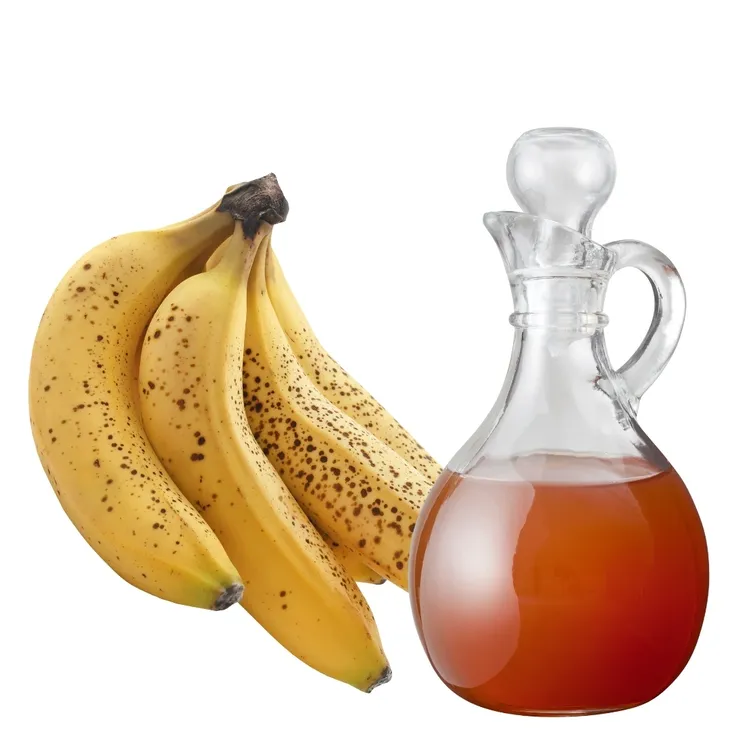
BANANA PEELS FERMENTATION RECIPE
Banana peels are often discarded without a second thought, but did you know they can be repurposed into a nutrient-rich fertilizer for your garden? This simple recipe will guide you through the process of making banana peel fermentation, which is packed with essential minerals like potassium, phosphorus, and calcium that your plants will love.
Ingredients:
- Banana peels from 5-6 bananas (preferably organic)
- 1-liter container with a lid
- Water (non-chlorinated)
- Brown sugar (optional)
Steps:
1. Gather Banana Peels:
- Collect the peels from several ripe bananas. Organic bananas are preferable to avoid pesticide residues.
2. Prepare the Container:
- Choose a clean 1-liter container with a lid. Ensure it’s well-rinsed to prevent unwanted contaminants.
3. Chop the Banana Peels:
- Cut the banana peels into small pieces. Smaller pieces break down faster during fermentation.
4. Fill the Container:
- Place the chopped banana peels into the container until it’s about half full.
5. Add Water:
- Fill the container with non-chlorinated water until it covers the banana peels completely. Chlorine in tap water can hinder the fermentation process, so use filtered or dechlorinated water if possible.
6. Optional: Add Brown Sugar:
- To speed up the fermentation process, you can add a tablespoon of brown sugar. Sugar acts as a food source for beneficial microorganisms.
7. Seal the Container:
- Close the container with the lid, ensuring it’s airtight to prevent unwanted pests.
8. Fermentation Period:
- Place the sealed container in a cool, dark place for about 2-3 weeks. Check it periodically to ensure the peels are still submerged; add more water if necessary.
9. Strain and Dilute:
- After the fermentation period, strain the liquid into another container. This liquid is your banana peel fertilizer concentrate.
- To use, dilute one part of the concentrate with three parts of water before applying it to your plants.
10. Application:
- Use your diluted banana peel fertilizer to water your plants. Apply it directly to the soil, avoiding contact with the leaves, once every 2-4 weeks.
Note:
- Keep the leftover banana peel solids; you can add them to your compost pile for additional soil enrichment.
By following this DIY banana peel fermentation recipe, you not only reduce kitchen waste but also provide your garden with a nutrient-packed fertilizer that promotes healthy plant growth. Happy gardening! 🌱🍌
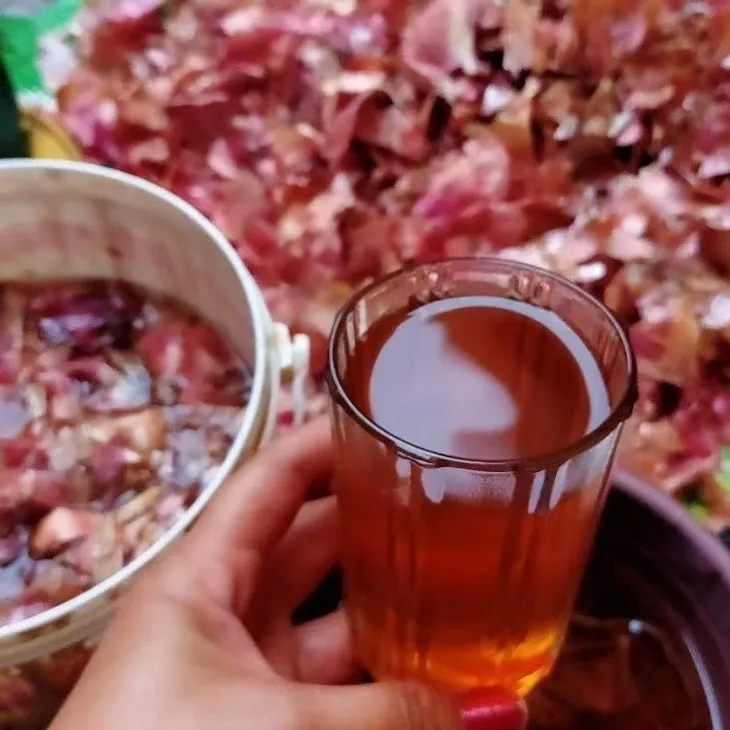
ONION PEELS FERMENTATION RECIPE
Ingredients:
- Onion peels from 4-5 onions (preferably organic)
- 1 quart (1 liter) of filtered water
- 2 tablespoons of sea salt (non-iodized)
Instructions:
1. Gather and Prepare the Onion Peels:
- Collect the dry outer skins of onions. You can save them over time or use the peels from a few onions at once.
- Rinse the peels thoroughly under cold running water to remove any dirt or debris.
2. Create the Brine:
- In a clean quart-sized glass jar, dissolve 2 tablespoons of sea salt in 1 quart (1 liter) of filtered water. Ensure the salt is completely dissolved.
3. Add the Onion Peels:
- Place the rinsed onion peels into the saltwater brine in the glass jar. Press them down so they are fully submerged.
4. Weight Down the Peels:
- To prevent the peels from floating to the surface, use a weight such as a smaller glass jar filled with water or a food-grade plastic bag filled with some brine.
5. Cover and Ferment:
- Cover the jar with a clean cloth or paper towel secured with a rubber band or string. This allows gases to escape while preventing contaminants from entering.
- Place the jar in a cool, dark place, ideally around 60-70°F (15-21°C). Let it ferment for about 1-2 weeks. You can taste it periodically to check the flavor.
6. Strain and Store:
- Once the fermentation period is complete and you’re satisfied with the flavor, strain the liquid into a clean glass container with a lid, discarding the onion peels.
7. Store Your Onion Peel Ferment:
- Store the fermented onion peel liquid in the refrigerator. It will keep for several months.
Usage:
- Use your onion peel ferment as a flavorful seasoning in soups, stews, sauces, or dressings.
- You can also dilute a small amount in water and consume it as a health tonic. Onion peels contain beneficial compounds and antioxidants.
Note:
- Always use clean, non-reactive utensils and containers to prevent contamination during the fermentation process.
- If you notice any signs of mold, an off-putting odor, or other signs of spoilage during fermentation, discard the batch.
Enjoy your homemade onion peel ferment, knowing that you’ve turned kitchen scraps into a flavorful and nutritious addition to your culinary repertoire!
Want to Start Farming? Here’s the First Thing You Should Grow
A few years ago, I was consulting for a first-generation farmer near Ludhiana. He had just quit his corporate job,
When Plants Speak: Learning to Read the Language of Deficiency
By Komal Jaiswal I’ve spent hours just sitting with my plants — not touching, not tending — just watching. And
How Do I Know If My Soil Is Good?
If you’re growing food — whether on a farm or in a few pots — this is the most important
The Silent Flame: A Love Letter to Phosphorus
By Komal Jaiswal Not all nutrients shout.Some whisper.Some work in the shadows.Some carry fire without ever asking for attention. Phosphorus
How the Garden Breathes: The Story of Nitrogen and the Silent Helpers
By Komal Jaiswal People often ask me, “What do you feed your plants?”And I always smile and say, “I feed
Edible Gardening: Where Soil Meets Soul
By Komal Jaiswal When I planted my first seed, it wasn’t in a garden — it was in my spirit.I
Brick Value in Soil: Why It Matters More Than You Think
Most farmers look at color, yield, or moisture when they assess their soil. But there’s one underrated indicator that tells
The Most Beginner-Friendly Vegetables to Grow in India
A few years ago, I set up a rooftop kitchen garden for a school teacher in Jabalpur, She told me,
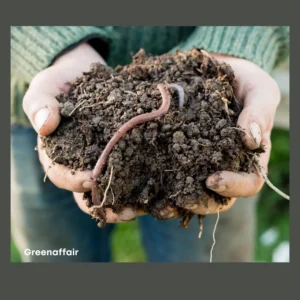
How to nurture earthworms
Earthworms help to increase the oxygen in soil by increasing the air flow and water, there are more than 3500

All you need to know about the Asteraceae family
Asteraceae family or the daisy family. One of the most important families in our organic garden, Asteraceae family or daisy

Why we need to save bees?
World Bee Day 2021 This is why we need to save bees! If living a healthy life and eating chemical
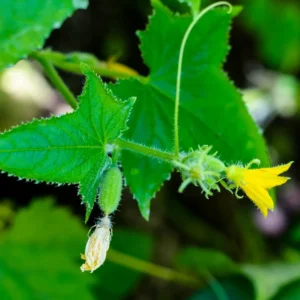
How to prepare your medium for growing vegetables
Tomorrow a new research can state a new theory…. A good soil or rich medium speaks for itself, you can
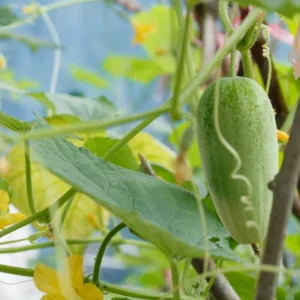
How to grow cucumbers
What you’ll need: – Germination tray – Good quality medium, learn how to make it here – A wide container which
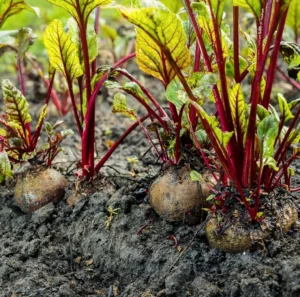
All you need to know about Amaranthaceae family
Sowing time: mostly annual and biennial, but I’ll suggest you start in a bit cooler spans! Soil medium: Ensure your growing medium
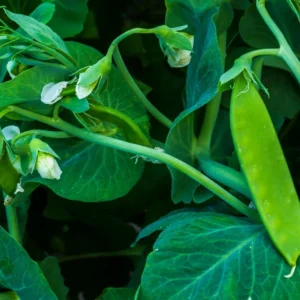
All you need to know about Fabaceae family
Fabaceae family or Leguminosae is the family of legumes! From the medicinal plant alfa-alfa to protein rich green beans, runner
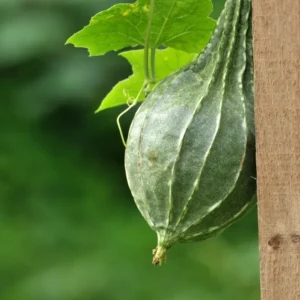
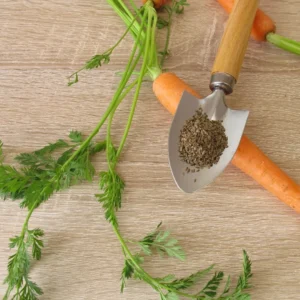
How to grow Carrots
How to grow carrot organically at home How to grow carrots at home. Carrot is a sweet, crunchy, tasty and
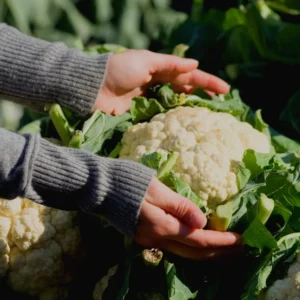
GROWING CAULIFLOWER AT HOME
learn to grow organic cauliflower, and recipes to relish your palates. Cauliflower Why to grow cauliflower? Cauliflower is one the
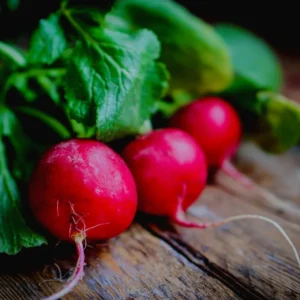
Radish: germinating, nourishing, harvesting organically at home.
“Get a taste of the earthy, zesty goodness of freshly harvested and washed horseradish! This image showcases the natural beauty
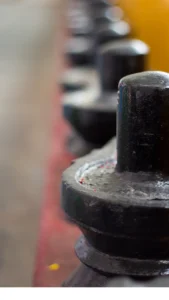
ARE SHIVRATRI OFFERINGS A SECRET TO HEALTHIER SOIL?
Ever wondered why weeds, leaves and poisonous fruits are offered to lord shiva on the occasion of Shivratri? Shivratri is
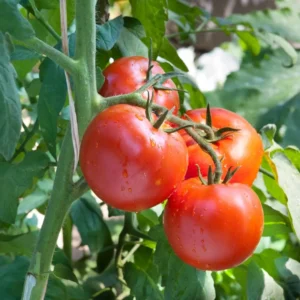
“Seed to harvest :Guide to Growing Juicy Tomatoes in Your Garden.
“From Plant to Plate: The Ultimate Guide to Growing Juicy and Delicious Tomatoes Using Permaculture Techniques” Hey there fellow garden

Summer camps for children.
“Empowering Kids with Compassionate Conversations and Sustainable Skills at Wilderness Camps” As parents, we all want our children to grow
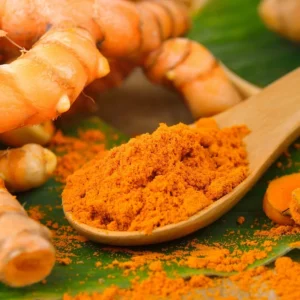
Grow Turmeric Naturally Using Permaculture Principles.
Growing turmeric using the principles of permaculture is an easy and sustainable way to enjoy the health benefits of this
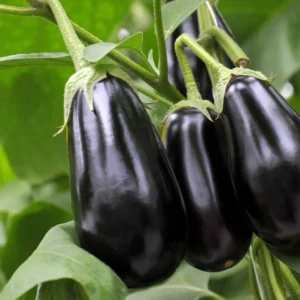
Growing Brinjal Using Companion Planting and Permaculture.
“Grow Brinjal Naturally with Permaculture Principles and Companion Planting – A Sustainable Solution” Brinjal, also known as eggplant or aubergine,
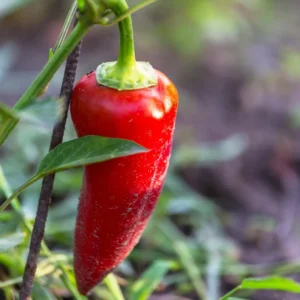
Spice Up Your Life: Growing Peppers with Permaculture Principles
Sustainable and Delicious: Growing peppers the Permaculture Way” Now, let’s talk companion planting. Peppers thrive with beans, tomatoes, and eggplants
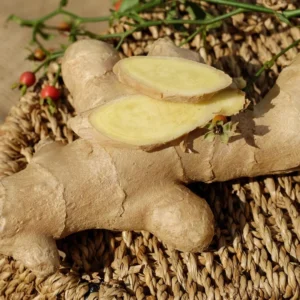
“Growing Ginger: Spice Up Your Garden with Permaculture.
“Discover the Joy of Growing Onions Naturally with Companion Planting and Permaculture Principles – No Pesticides Required!” Did you know?
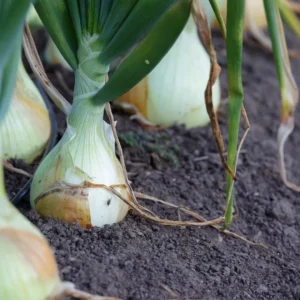
“Permaculture Onion Growing: Tips for a Bountiful Harvest”
Discover how to grow onions using permaculture and companion planting to create a healthy and sustainable garden. No pesticides required!

Are you guarding your plates from pesticides!
Unmasking pesticides in our food: A closer look at the risks I wanted to shed light on a pressing matter

“Unlocking the Puzzle: ADHD in Kids, the Nutritional Connection🧩
“Unlocking the Puzzle: ADHD in Kids and the Nutritional Connection “Unlocking the Puzzle: ADHD in Kids and the Nutritional Connection 🧩🍎. I

Unmasking the Reality of Heart Attack!
The Reality of Heart Attack! “Guardian of Your Heart: Unmasking the Reality of Early Heart Attacks! In the midst of

Exploring Nematodes – Tiny Wonders, Big Impact! 🪱🔬
Nematode in Microscope 🪱🔬 “Diving into the Beneath: Exploring Nematodes – Tiny Wonders, Big Impact! 🪱🔬#NematodeExploration” Dear Soil Enthusiasts, Let’s take a

Nature’s Hidden Treasures 🍄🌱 FungiFascination”
Nature’s Hidden Treasures 🍄🌱 FungiFascination” “Unlocking the Wonders of Fungi: Nature’s Hidden Treasures 🍄🌱 FungiFascination” Today, let’s dive into the captivating world of fungi,

Microscopic Marvels and Misconceptions 📷📷 #Bacteria101″
Microscopic Marvels and Misconceptions 📷📷 #Bacteria101″ “Unveiling the World of Bacteria: Microscopic Marvels and Misconceptions #Bacteria101″ Today, let’s unravel the captivating tale of bacteria,

Unveiling the Quirky World of Protozoa!
Unveiling the Quirky World of Protozoa! In the hidden world beneath our feet, a microscopic adventure unfolds as protozoa, tiny

Unlocking the Magic of Compost Tea in Organic Gardening🌱🌿
“Compost Tea: Nurturing Gardens, Enriching Soil, and Cultivating Green Knowledge 🌱🌿 #SustainableGardening #SoilAmendments #GreenThumb” #Compost Tea Today I thought of Cultivating

“Discovering Biochar’s Power in Sustainable Gardening”
“Elevate Your Garden’s Potential with Biochar: A Sustainable Soil Game-Changer! 🌱🔥 Enhance your soil, nurture beneficial microorganisms, and grow a

Understanding CEC: Unlocking Soil’s Nutrient Holding Capacity
“Dig Deeper into Soil Health: Unraveling the Mystery of Cation Exchange Capacity (CEC) 🌱💧 Discover how CEC influences nutrient availability

Mulch Magic: Embracing Nature, Avoiding Plastics
“Embrace Mulch Magic for Your Garden! 🌱🌿 Discover the benefits of natural mulch and why it’s time to say no
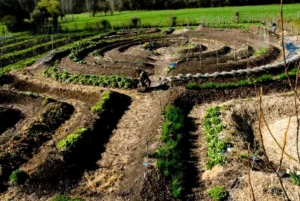
“Our Regenerative Agriculture Journey”
“Greenaffair: Nurturing the Soil, Nourishing the Soul, and Creating a Regenerative Revolution 🌱🌍” In a world where the health of

“Green Affair’s Sustainable Food Forest: A Greener Future”
🌱 Exciting News from Green Affair: Creating a Sustainable Food Forest! 🌳 Thrilled to share this amazing article from Sunday

Maggots: Unveiling Nature’s Cleanup Crew
“Unveiling the Unsung Heroes: How Maggots Contribute to Nature’s Cleanup and Renewal. 🐛🌱 #EcosystemRecyclers #Biodiversity #Sustainability” 🌱 Meet maggots, the
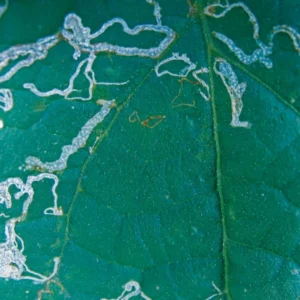
Leaf Miners: The Intricate Architects of Leaf Patterns
“Exploring the world of #LeafMiners, nature’s tiny architects who craft unique leaf patterns while weaving a delicate balance in our
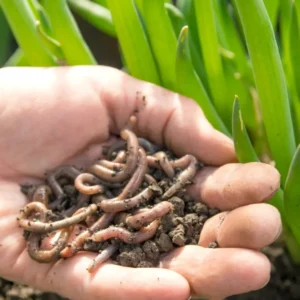
Earthworms: Nature’s Soil Engineers
“Meet the Earthworms: Nature’s Subterranean Engineers 🪱🌿 These remarkable creatures are the architects of healthy soil, working tirelessly beneath our

🌱 Elevate your plate, elevate your life! 🍏✨
“Savor the Extraordinary in Every Bite 🌱✨ #NourishFromNature” It’s time to break free from the ordinary and savor the extraordinary.
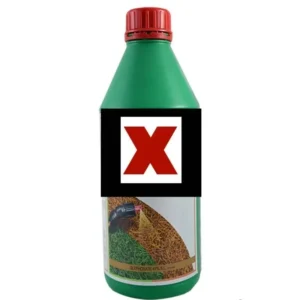
“Chemical “xxxxx”: A Silent Threat to Human Health 🚫🌍”
“Unveiling the hidden dangers of chemical herbicides: Let’s protect our health and planet by making informed, sustainable choices. 🌿🌏 In

“The Hidden Hazard: Adulterated Ghee’s Dark Reality 🚫🥛”
Ghee, the golden elixir renowned for its purity and nutritional value, is unfortunately not immune to the shadow of adulteration.

“Heart Disease & Agricultural Chemicals: An Alarming Connection”
“Protecting our hearts and our planet: A call to action for sustainable farming and healthier choices. 🌱🫀🌍 As heart disease
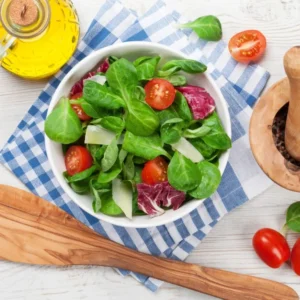
Exploring the Link between Soil Health and Human Wellness
“Cultivate Health from the Ground Up: The Hidden Connection Between Soil and Wellness” When we think about wellness, our minds
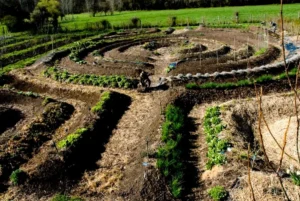
“Our Regenerative Agriculture Journey”
In a world where the health of our planet and the well-being of humanity are inextricably linked, the importance of
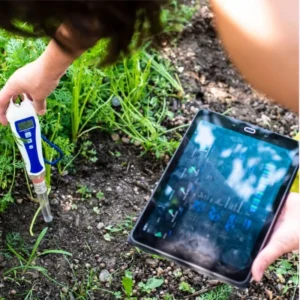
🌱🔬 Understanding the Vital Role of Soil Testing! 🌿✨
“Uncover your land’s potential with soil testing! 🌱🔬 Optimize growth, spot deficiencies, and nurture a sustainable landscape. 🌿💧 Make informed
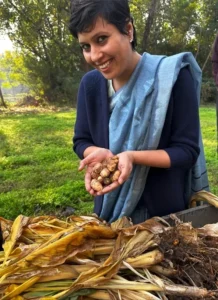
🌟 The Golden Goodness of Turmeric! 🌿✨
“Embrace the golden glow of wellness with nature’s treasure, turmeric! ✨🌿 #GoldenGoodness #TurmericMagic” 🌟The vibrant spice that’s been adding its
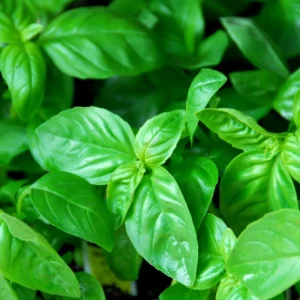
🌿 The Power of Basil 🌿
“Unveiling the Herb of Wellness: Basil – Nature’s Fragrant Powerhouse! 🌿✨ #BasilMagic #HerbalWellness” 🌿Basil isn’t just a fragrant herb that

🌟 Exploring the Magic of Cinnamon! 🌟
“Cinnamon: Spice with Health & Flavor! 🌟🍂 #CinnamonMagic #FlavorfulHealth” Did you know that cinnamon is more than just a flavorful

“Nutrient-Rich Winter Veggies: Seasonal Goodness for Health! 🌿❄️
“Winter’s Harvest: Nutrient-Packed Seasonal Veggies! 🥕🥦🍠 As winter blankets our surroundings, it’s the perfect time to dive into the world

“Weedy Wonders: Journey with Organic Gardening Hero”
“Discovering the Unexpected Heroes: Embracing Weeds in Organic Gardening! 🌱🌿 #OrganicGardenHeroes #WeedWisdom” Weeds, the notorious troublemakers of our gardens and

🥦🥕 December Veggies: Winter Gardening! 🌱🍅
“Winter Veggie Wonderland: December Gardening Delights! 🥦🥕🌱” Hey everyone! As we cozy up for winter, why not dive into some

“Bay Leaves: Culinary Marvels and Health Boosters”
“Exploring Bay Leaves: Flavorful and Healthful! 🌿✨ #BayLeaves #FlavorfulHealth” Bay leaves, derived from the aromatic bay laurel tree, offer both
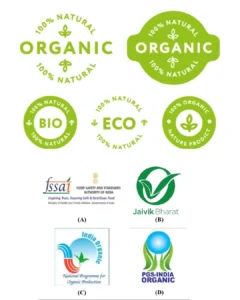
A Comprehensive Guide to Obtaining Organic Certification in India
Unlock the green potential of your farm with our guide to organic certification in India. Embrace sustainability and open doors

” Solar Power:Illuminating the Path to Chemical-Free Gardening”
“Embracing Solar-Powered Farming: A Brighter Path to Sustainable Agriculture 🌞🌿” In our quest for sustainable agriculture and gardening practices, the

🌼 The Marvelous Marigold! 🌼
“Embrace Nature’s Defender: The Marvelous Marigold! 🌼🌿 #MarigoldBenefits #NaturalWellness” The vibrant and cheerful Marigold isn’t just a visual delight; it’s

“Rosemary: Flavorful Herb, Healthful Wonder!”
“Rosemary: Where Flavor Meets Wellness! 🌿✨ #RosemaryMagic #HealthfulHerb” A fragrant and versatile herb, Rosemary (Rosmarinus officinalis) is more than just
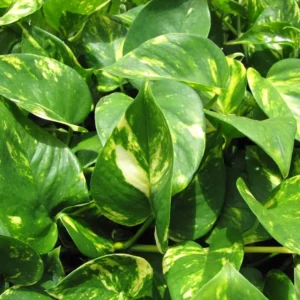
🌿 Epipremnum Aureum -The Money Plant! 💰🌱
“Money Plant: Symbol of Prosperity & Style! 🌿💰 Invite positive energy with Epipremnum aureum. ✨ #MoneyPlant #ProsperitySymbol” Epipremnum aureum, commonly

Embracing the Beauty of a Balanced Food Forest
Dear Nature Enthusiasts, Greetings from our evolving food forest, a place where the magic of life unfolds with each passing
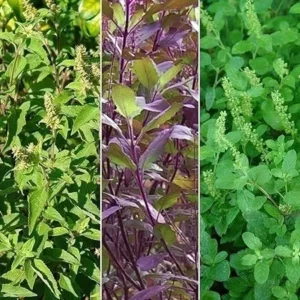
🌿 Tulsi Plant Varieties! 🌺🍃
“Dive into the world of Tulsi varieties – Your gateway to holistic wellness! 🌿💚 #TulsiVarieties #HolisticHealth” Tulsi, also known as
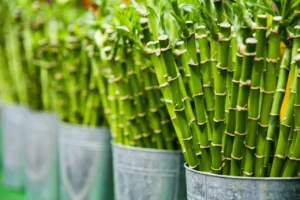
🎋 The Versatile Bamboo Plant! 🌿🏡
The Bamboo Plant isn’t just a decorative addition – it’s a symbol of positivity and versatility! 🌟 1. Positive Energy: Celebrated
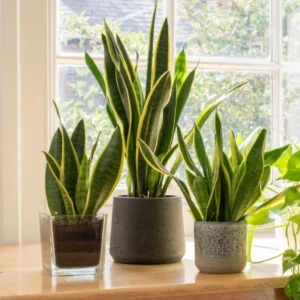
🌿 The Snake Plant! 🐍🌱
“Snake Plant: The Stylish Air-Purifying Houseplant You Need! 🌿✨ Breathe Easy with Cleaner, Fresher Air. 🌬️💚 #SnakePlant #HealthyLiving” The Snake

🌿 Lavender: Nature’s Calming Gem! 💜
Lavender! It’s not just a pretty sight – this purple wonder brings a whole lot of calm to the table.
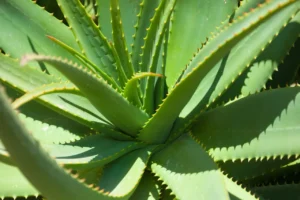
“Discover the Multifaceted Benefits of Aloe Vera! 🌱✨”
“Aloe Vera: Nature’s Multifunctional Marvel! 🌿✨ Unveil its versatile benefits for skin, hair, and wellness. The Aloe Vera plant boasts

“Empowering Agriculture: Honored at GB Pant University, India”
“I am thrilled to share my recent experience at the esteemed GB Pant University of Agriculture and Technology in India.

“Hugelkultur: Nature’s Raised Bed Gardening Secret”
“I am thrilled to share my recent experience at the esteemed GB Pant University of Agriculture and Technology in India.
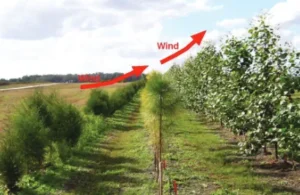
“Harnessing the Breeze: Wind’s Role in Chemical-Free Farming”
In the quest for chemical-free farming, we often overlook a powerful natural ally—the wind. Let’s explore how wind directions can

Mountain Soil Diversity: Opportunities & Challenges
Mountain soils, shaped by the unique geographical and environmental conditions of high-altitude regions, exhibit a range of characteristics that distinguish

“Understanding Desert Soil:Challenges and Agricultural Adaptation
Desert soil, shaped by extreme arid conditions, possesses distinct characteristics that significantly impact its use in agricultural practices. Characteristics of
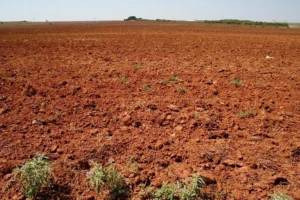
“Laterite Soil: Characteristics, Uses, and Challenges”
Laterite soil, characterized by its high content of iron and aluminum oxides, presents distinct advantages and challenges for various applications,
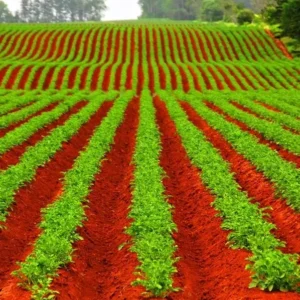
“Unveiling the Attributes and Agriculture of Red Soil”
Red soil, characterized by its distinct hue due to high iron oxide content, boasts several properties that make it suitable
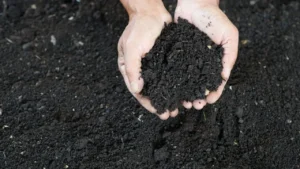
“Black Soil (Regur): The Agriculture Enricher”
Black soil, scientifically termed Regur or black cotton soil, is renowned for its fertility and unique properties that make it
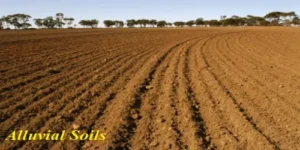
“Alluvial Soil: Fertile Ground for Bountiful Agriculture”
Alluvial soil, derived from mineral-rich sediments deposited by rivers, is recognized for its high fertility, making it highly beneficial for

“Towards Chemical-Free Agriculture: Embracing the Lunar Path”
Introduction: In the world of agriculture and gardening, the quest for sustainable and chemical-free practices has gained immense importance in
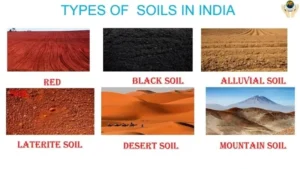
India’s Soil Diversity: A Blueprint for Sustainable Agriculture
India’s agricultural landscape is intricately woven with a diverse tapestry of soil types, each playing a crucial role in the

“India’s Timeless Arboreal Wonders: Ancient Trees 🌳”
In the heart of India, amidst the sprawling landscapes, lie some of the world’s most ancient living witnesses to history—the
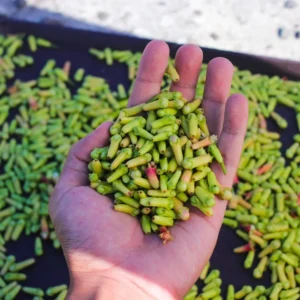
🌿✨ Cloves: Nature’s Aromatic Gem! ✨🌿
Let’s take a moment to delve into the world of #cloves, those tiny aromatic buds that pack a flavorful punch!

The Soil Revolution Starts at Home: Let’s Regenerate Together
In our fast-paced, concrete-covered world, it’s easy to forget the precious gift beneath our feet: the soil. Yet, the health

Pando: Unveiling the Eternal Story of Earth’s Oldest Tree Colony
Pando: A Living Legend, Nature’s Timeless Tapestry. In the heart of Utah, an awe-inspiring wonder stands tall, hidden within the

Moss: Nature’s Resilient Timekeepers
“Nature’s Ancient Guardians: Moss, Living Legends of Earth’s History. 🌿🕰️” In the realm of Earth’s botanical history, #moss stands as
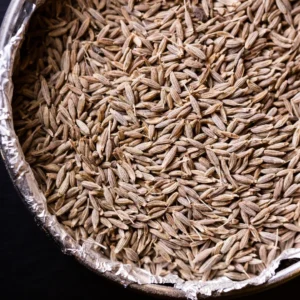
🌿✨ The Versatility of Cumin: A Spice That Transforms Dishes! ✨�
“From kitchens to wellness, cumin is the flavor-packed secret to global cuisines and health! 🌍🌿 #CulinaryGem #HealthBoost” Cumin, an aromatic
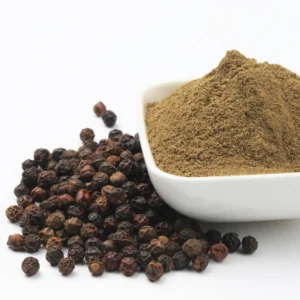
🌶️✨ Black Pepper: Spice that Adds Zest to Life! ✨🌶️
#Black pepper, the king of spices that brings an unparalleled zing to our dishes! It has amazing uses, #health #benefits,

🌶️🔥 Exploring the World of Chillies: More Than Just Spice! 🌶️
“Chillies: Beyond Spice, A Culinary Adventure! 🌶️🔥✨ #ChilliLove #FlavorfulJourney” Chillies, from mild to wild, add a fiery zest to our

“Discovering Soil Microbiome: Impact on Earth & Human Health”
“Unveiling Earth’s Microbial Cosmos: Life Beneath Our Feet! 🌱🔬 #SoilMicrobes #HiddenWorlds” Beneath the verdant landscapes, bustling cities, and our very
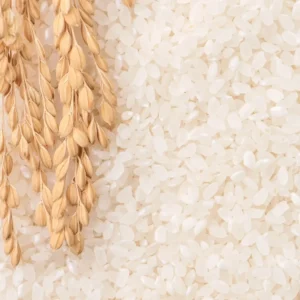
Mushkebudji Rice: The Fragrance of kashmir.
Greenaffair brings to your table an ancient treasure of Kashmiri cuisine: Mushkebudji rice. This traditional, aromatic rice variety is a

The Three Must-Have Soil Tests Every Gardener and Farmer Needs
Let the Soil Breathe and Regenerate Healthy plants begin with healthy soil. Whether you’re a home gardener, an organic farmer,
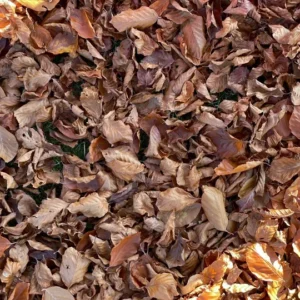
Burning or burying leaves harms soil health. Copy
Let the Soil Breathe and Regenerate These aren’t just dry leaves — they’re tomorrow’s soil. Let the Soil Breathe

Burning or burying leaves harms soil health.
Let the Soil Breathe and Regenerate These aren’t just dry leaves — they’re tomorrow’s soil. Let the Soil Breathe
How to use your Facepack
For Blood Type A and O

1. Preparation:
• Mix the facepack with plain water or rose water to achieve a smooth pancake/dosa batter-like consistency.
2. Application:
• Apply evenly on your face and neck, avoiding the eye area.
3. Duration:
• Leave it on until it dries completely.
4. Rinsing:
• Rinse off with lukewarm water and gently pat your skin dry.
5. Moisturizing:
- • Take a small amount of almond oil and massage it gently onto your skin.
Result: Leaves your skin baby soft, nourished, and refreshed.
For Blood Type B

1. Preparation:
• Mix the facepack with curd or milk to achieve a smooth pancake/dosa batter-like consistency.
2. Application:
• Apply evenly on your face and neck, avoiding the eye area.
3. Duration:
• Leave it on until it dries completely.
4. Rinsing:
• Rinse off with lukewarm water and gently pat your skin dry.
Result: Leaves your skin baby soft, hydrated, and glowing.
Additional Tips for All Blood Types

Additional Tips for All Blood Types:
• Frequency: Use the facepack twice a week for best results.
• Patch Test: Perform a patch test before first use to check for skin sensitivities.
• Avoid Overdrying: Do not leave the facepack on for too long after it dries, as it can make the skin feel tight.
• Exfoliation: For better absorption, gently exfoliate your skin before applying the facepack.
• Relaxation: Use the facepack as part of your self-care routine. Lie down and relax while it works its magic!
• Storage: Keep the facepack in a cool, dry place, and ensure it’s sealed after use to retain its freshness.
Enjoy soft, glowing skin tailored to your unique blood type!
